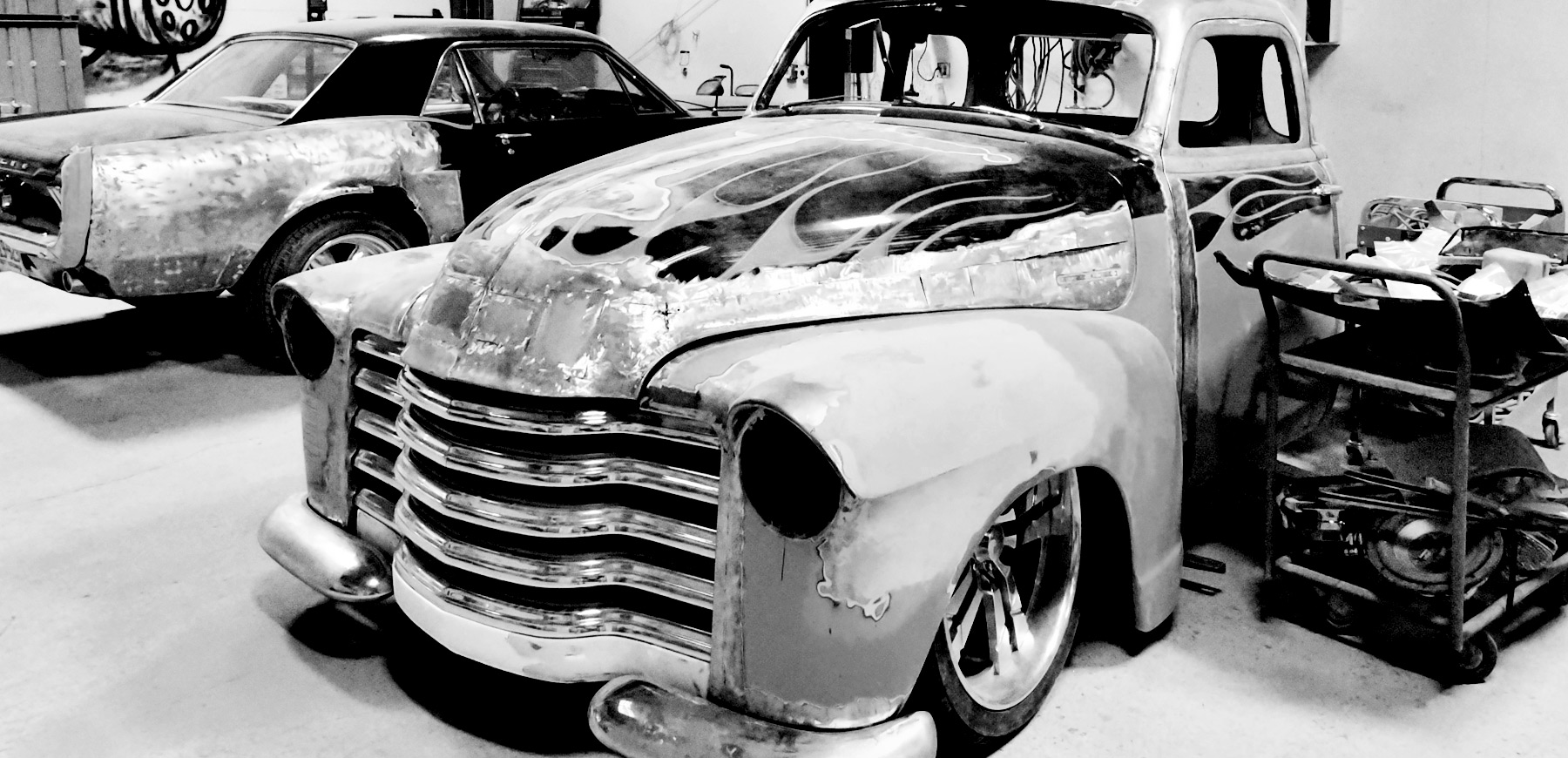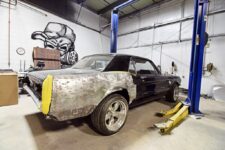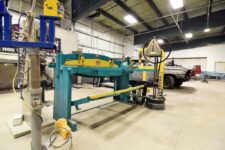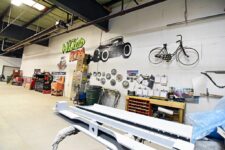Where Wicked is made
Some of the cars that roll into Wicked’s shop may arrive in rough shape, but more often than not they come with nicknames. And no matter how much rust “Beauty” has on her frame, nobody wants to leave their baby in a filthy shop. (Come on now. This is like dropping your child off at daycare.) For this reason, inside of Wicked’s 3,000-square-foot facility, cleanliness is the name of the game. Pick a surface and, chances are, you can eat off of it. And because it’s designed to house as many as a dozen projects at once, absolutely everything has its place.
In order to get at every square inch of a car, from its top to its underbelly, Wicked technicians utilize two full-scale rotisseries. Pair those with a full lineup of grinders and blasters, and you end up with exactly what it takes to get Wicked results: bare metal.
Of course not every part of a car is salvageable—not to mention, part of Wicked’s artistry relies on manufacturing fully custom parts and panels—and that’s where a full lineup of metal shaping tools comes in. And while custom frames and power trains may be electronically aligned and tuned for high performance, when it comes to design and fabrication, Wicked’s technicians do it the old fashioned way: by hand.
Everything from sheers and shrinker/stretchers, to bead rollers, English wheels and presses give body tech’s the ability to not only recreate in exact detail, but to design and craft from scratch. Meanwhile, a full lineup of aluminum, mig and resistive spot welders bring those parts together in perfect harmony, before your unique classic is rolled into the paint booth for a one-of-a-kind finish.




